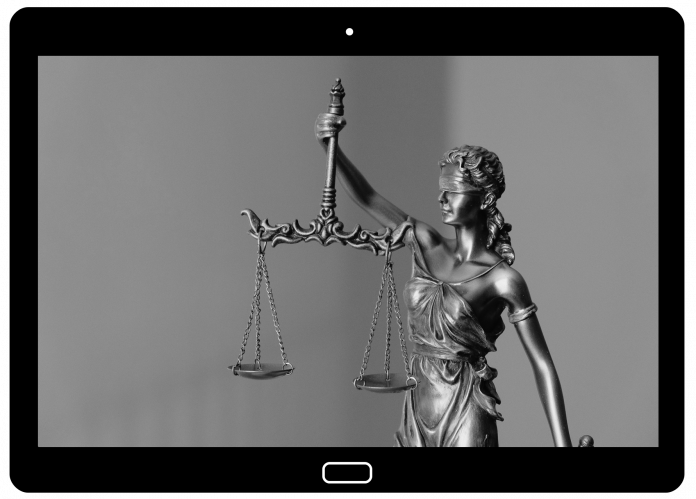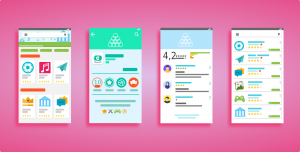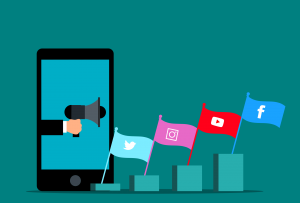From technical aspects to social, take a look at some of the most common misconceptions and lies told about digital signage. We won’t cover the basic misbeliefs you likely know by now. Digital signage as an unprofitable investment has been proven wrong many times already, even after the COVID-19 pandemic! Instead, let’s weed out those that have long outstayed their welcome!
Digital signage is fully self-sustaining
The initial setup aside, many users operate digital signage with the preconceived notion that they won’t need to do much with their content. Yes, you can create a perpetual loop of content to rotate for infinity, but you’ll very quickly find the flaws in this approach.
Content gets stale and repetitive very quickly, at which point it becomes less effective. Give it more time and it crosses over into the annoyance. In short, neglecting your digital signage can not only make it a useless component, but one that creates a negative impact.
In truth, digital signage can be self-sustaining but only under specific conditions. Construct a complex enough network of live sources of content. Then set aside time in your workflow here and there to add time-sensitive content such as sales, discounts, new ads, etc. Furthermore, set up some externally sourced live content to fill your displays. A live currency exchange display or RSS fed news, for instance, won’t need much management.
Digital signage needs no supervision
Let’s imagine you created a really complex content structure a month in advance. You scheduled it to run in a distant branch of your company. The greatest mistake after doing all that hard work would be to assume that you don’t need to check on your displays until a content update is due.
Hardware and software run into hiccups from time to time. Software providers will do their best to anticipate and solve any issues that may arise, but unpredictable issues can occur. They’re nobody’s fault. Events like a power outage, hardware glitch, or internet instability are things to consider.
Of course, the solution isn’t to check on your displays constantly—especially if you have hundreds of them. Instead, take some precautionary steps! Your digital signage software will immediately notify you of any errors or if a particular display is not displaying content for any given reason. You may even remotely control and check up on the problematic display through your digital signage software. All you need to do is take these errors seriously when they emerge and this misconception won’t affect you!
Not many people look at signage content
“Digital signage is just a flashy tool. Nobody will look at the actual content anyway, so why bother? A flashy display is enough.” This is a risky misconception and also a poor reason for investing in digital signage. Yes, it is a flashy tool, but if it draws attention to something that’s irrelevant, it’s without merit in the long run.
Digital signage absolutely is eye-candy, we fully agree. It’s the “latest” gadget that everyone will notice and make them think highly of your business at first glance. As they say: you don’t get a second chance for a first impression. What then about the second visit? The third? Will your patrons be equally impressed if they find the content hasn’t changed in a week? A month?
Digital signage can be an amazing tool to draw attention to a message and to engage new visitors at your business. If it continually disappoints and fails to engage a potential consumer, they will stop giving it the time of day and learn to ignore it. It’s vital that you get this right at the very beginning. Otherwise, you’ll lower the value and power of your digital signage. The result? Your next campaign will be less likely to succeed.
Digital signage can’t make a big difference
The sad thing about this misconception is that it is partly true. Digital signage often does not make a big difference. But the cause for it isn’t technology! It’s the operator. Here’s an extreme comparison to consider: According to numbers from 2020, 90% of new startups fail. Does this mean a startup can’t make a big difference? It can’t transform into a multi-million dollar business?
Luckily, managing digital signage well is nowhere nearly as difficult as managing a startup. But the point I’m trying to make is this. Just because so many people fail at managing their digital signage well, doesn’t mean you will too or that the medium itself is useless. After seeing so many poor examples of digital signage uses, it shows it can be a challenging task indeed that should not be handled as an afterthought. Pay attention. Perceive your digital signage the way a consumer would. Keep the content fresh. Engage with a clever ad. Deliver a message. Get the consumer to act, and you’ll make an impact!
Here are some posts for you to get you on the right track for making an impact with your digital signage content!
- Problems solved by digital signage.
- Making your digital signage more exciting with a few tweaks.
- The two main divisions of your content.
Out-of-Home is a dying method of advertising
If you’ve never heard a wrong presumption before, this is one. Out-of-Home advertising is by no means a new method of advertising. It has been around for a long time. But, unlike most other advertising methods whose heyday is indeed over, it evolved from its humble beginnings to current standards.
Almost certainly, there will come a time when outdoor advertising becomes obsolete, like any other method of advertising. It will be forced to change, in time. But that won’t be happening any time soon because each time something’s thrown its way, it keeps pushing forward:
Theory: With the rising reach of targeted internet ads, nobody will buy Out-of-Home ads anymore. They won’t be worth the investment.
Reality: With the reach of TV and internet ads, people are getting more accustomed to ignoring and bypassing them. Out-of-Home ads can’t be blocked, skipped, nor can their physical presence be ignored, making them a worthy investment.
Theory: With the rise of autonomous vehicles, OOH will be less effective because people won’t be looking outside as much.
Reality: With the rise of autonomous vehicles, people don’t have to look out for traffic. They can look around more, perceiving OOH more clearly and easily.
Theory: After COVID-19 lockdowns, everyone got used to doing everything online. Online ads will become even more impactful. And with lower outdoor traffic, OOH won’t be worth the investment.
Reality: After COVID-19 lockdowns, people expressed they appreciated being physically present in the outdoors more, resulting in greater perception of their surroundings, including OOH advertising.
Digital signage software is not necessary
In theory, digital signage is indeed not necessary to manage a few displays properly. Keep in mind that it’s a pretty big IF, because you’ll have a harder time scheduling your content daily. As you make more content, you’ll have to navigate the sea of files you’ve created. Then there’s dividing the screen for layout campaigns, building playlists, menus, live feeds, and all that on a daily basis. Let’s not even talk about finding the errors on your players or remotely fixing them without installing a plethora of third-party programs on each device. Fingers crossed they’re all compatible!
On the other hand, you can just opt for digital signage software and leave those troubles behind. You’ll even gain access to countless features, apps and tools that do some of the creation of certain types of content for you. Feel free to try it all out with OnSign TV!









